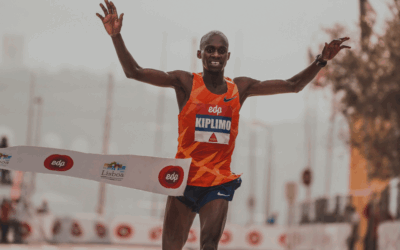Intro To Workout Plateaus
A workout plateau happens when progress stalls despite consistent effort—whether in strength, endurance, or body composition. It’s frustrating, but hitting a workout plateau is also a normal part of training.
The good news? Hitting a plateau isn’t failure—it’s a chance to adjust and come back stronger. This guide will walk you through why it happens, and how to break past it with smart strategies like progressive overload, periodization, recovery, and coaching. Let’s get you back on track.
After reading, if you still need help, you can contact us.
What is a Workout Plateau?
A workout plateau happens when your body stops responding to your training stimulus, leading to stalled progress despite continued effort. This can manifest in different ways—whether it’s strength training where you stop lifting heavier weights, endurance workouts where your heart rate and performance stagnate, or body composition goals where changes in muscle mass or fat loss slow down.
Why Do Workout Plateaus Happen?
Both beginners and experienced lifters encounter plateaus at some point in their fitness journey. For newcomers, initial progress can be rapid due to neuromuscular adaptation, but over time, the body becomes more efficient, and gains slow down. Advanced athletes, on the other hand, hit plateaus as they approach their genetic limits or fail to introduce progressive overload effectively.
Here are some reasons why you might experience a workout plateau:
- Insufficient increase in intensity or volume. The principle of overload is king here. The principle of overload highlights the need to gradually increase the demands on your body to stimulate growth and adaptation.
- Not varying exercises or rep schemes. Sticking to the same routine can lead to stagnation, as your muscles become accustomed to movements.
- Not varying the complexity as a means of progression. According to La Scala et al., overcoming a training plateau isn’t just about increasing weight or volume—adding complexity to your routine in various ways is essential.
- Recovery Deficits like insufficient rest, poor sleep, or nutrition gaps.
If you’re experiencing a workout plateau, it’s important to note that plateaus are often a sign it’s time to reassess, not quit.
Keep in mind that sometimes what seems like a plateau might actually be “overreaching”… when you continue to train but things are not getting better, they may even be getting WORSE. This is different from a Workout Plateau, and you can read more about that in our post about overreaching.
How to Break Through a Workout Plateau
1. Switch Up Your Routine
If you’ve been following the same training split, movement patterns, or exercise order, it might be time for a change. The body adapts to repeated stressors, so altering variables like exercise selection, tempo, or even rest intervals can provide a new stimulus.
According to La Scala et al., overcoming a training plateau isn’t just about increasing weight or volume—you can also add complexity to your program by:
- Introducing more technically demanding exercises that challenge coordination and stability (e.g., single-leg squats instead of regular squats).
- Increasing movement variability, such as changing grip positions, stances, or range of motion to engage different muscle groups.
- Incorporating task-specific functional movements, like replacing a traditional bench press with a standing cable press to improve real-world strength demands.
By integrating complexity into your routine, you can push past a plateau without necessarily increasing intensity or volume. This helps keeping your body adapting and progressing.
2. Incorporate Progressive Overload
To keep making gains, you need to progressively increase the demands placed on your muscles. This can be done by:
- Lifting heavier weights
- Adding more reps or sets
- Increasing the intensity of your workouts by shortening rest periods or incorporating tempo training
Progressive overload isn’t just about adding weight—it’s about managing intensity and volume strategically to ensure continued adaptation.
3. Periodize Your Training Plan
Rather than training at a constant intensity, periodization involves structuring training into phases that cycle through volume, intensity, and recovery. This helps prevent stagnation and overtraining while ensuring long-term progression. A well-designed training program might alternate between:
- High-volume hypertrophy phases to build muscle mass
- Strength-focused phases with lower reps and heavier loads
- Deload weeks to allow recovery and adaptation
This structured approach ensures you’re not constantly pushing the same training stress without allowing for necessary recovery and supercompensation.
4. Focus on Range of Motion
Optimizing range of motion ensures proper technique and full movement patterns, which can enhance strength and mobility while reducing injury risk. Additionally, targeting weak points in a lift can be a game-changer. For example:
- If your sticking point in a squat is midway, incorporate pause squats to strengthen that specific position.
- If you struggle with lockout in bench press, add board presses or band resistance to reinforce the movement.
By emphasizing where your lift slows down, you can break past strength plateaus more effectively.
5. Train with a Professional
A coach can identify weaknesses and imbalances that might be limiting your progress. This is particularly important for endurance athletes, who often enjoy long, slow distance training but neglect speed work. A qualified endurance coach can analyze training data, pinpoint inefficiencies, and make targeted adjustments to break through even long-distance race plateaus.
6. Prioritize Recovery
Even with perfect programming, progress stalls when recovery is neglected. Proper sleep, rest days, and stress management are essential to adaptation and muscle growth.
If you change nothing else, prioritizing more sleep may act as a performance enhancer. Research has shown that even a single night of restricted sleep after a heavy workout can reduce endurance performance by 4% the following morning in trained cyclists (Watson et al, 2017). This underscores the importance of consistent, high-quality sleep for recovery and long-term gains.
By implementing these strategies, you can push past training plateaus and continue progressing toward your fitness goals.
Why Custom Strength Coaching Helps You Break Plateaus Faster
If you’ve tried adjusting your training program, pushing through progressive overload, and prioritizing recovery but still feel stuck, the missing piece might be customized coaching. Breaking a strength training plateau isn’t just about training harder—it’s about training smarter. That’s where Custom Strength Coaching comes in.
One-size-fits-all programs don’t account for your specific strengths, weaknesses, injury history, or goals. With custom strength coaching, you get:
- A plan built around you, not a generic template
- Targeted modifications to address weak points in your range of motion, mobility, or technique
- Training adjustments based on your real-time progress—not guesswork
Training plateaus often stem from small inefficiencies that go unnoticed. A coach can:
- Spot technique breakdowns that may be limiting your strength gains
- Adjust exercise selection and loading strategies to break through performance ceilings
- Provide real-time feedback so you don’t waste weeks (or months) wondering why you’re stuck
Anyone can push through a plateau with brute force, but that approach risks injury and burnout. Custom coaching ensures your training is:
- Sustainable—so you keep building muscle and strength without overtraining
- Data-driven—tracking heart rate, recovery metrics, and performance trends to optimize results
- Tailored to your lifestyle—so training fits into your schedule, rather than feeling like a chore
With Custom Strength Coaching, you don’t have to wonder if you’re doing the right thing. You’ll have a structured, results-driven plan to keep moving forward—so you never have to face another frustrating plateau alone.
Ready to break through? Let’s build a smarter, stronger training plan—together.

More About The Author
Carla Robbins, Owner of Vital Strength and Physiology Inc
Carla’s journey into the world of endurance training, strength and conditioning, and exercise physiology began with her Undergraduate Degree in Exercise Physiology at the University of Calgary and continued into her graduation with a Master’s in Exercise Physiology in 2016. Between working for the Canadian Sports Institute to the creation of her company Vital Strength and Physiology Inc, Carla is driven by a desire to find better ways to address complex cases in professional and everyday athletes and individuals.
Conclusion
Plateaus happen. They’re not a sign to push harder, but a cue to train smarter. The key to breaking through isn’t just more effort—it’s strategic adjustments in your programming, recovery, and technique.
Instead of seeing a plateau as a roadblock, think of it as a growth opportunity—a chance to reassess, refine, and come back stronger.
Ready to move forward? Explore Custom Strength Coaching and take the guesswork out of your training. Let’s build a plan that keeps you progressing.
References
Gelman, R., Berg, M., & Ilan, Y. (2022). A Subject-Tailored Variability-Based Platform for Overcoming the Plateau Effect in Sports Training: A Narrative Review. In International Journal of Environmental Research and Public Health (Vol. 19, Issue 3). MDPI. https://doi.org/10.3390/ijerph19031722
Kataoka, R., Hammert, W.B., Yamada, Y. et al. The Plateau in Muscle Growth with Resistance Training: An Exploration of Possible Mechanisms. Sports Med 54, 31–48 (2024). https://doi.org/10.1007/s40279-023-01932-y
la Scala Teixeira, C. v., Evangelista, A. L., Pereira, P. E. de A., da Silva-Grigoletto, M. E., Bocalini, D. S., & Behm, D. G. (2019). Complexity: A Novel Load Progression Strategy in Strength Training. Frontiers in Physiology, 10. https://doi.org/10.3389/fphys.2019.00839
Schiffer, J. (2011). New Studies in Athletics. New Studies in Athletics, 4(3), 7–17.
Watson, A. M. (2017). Sleep and Athletic Performance. American College of Sports Medicine., 16(6), 413–419. http://journals.lww.com/acsm-csmr



